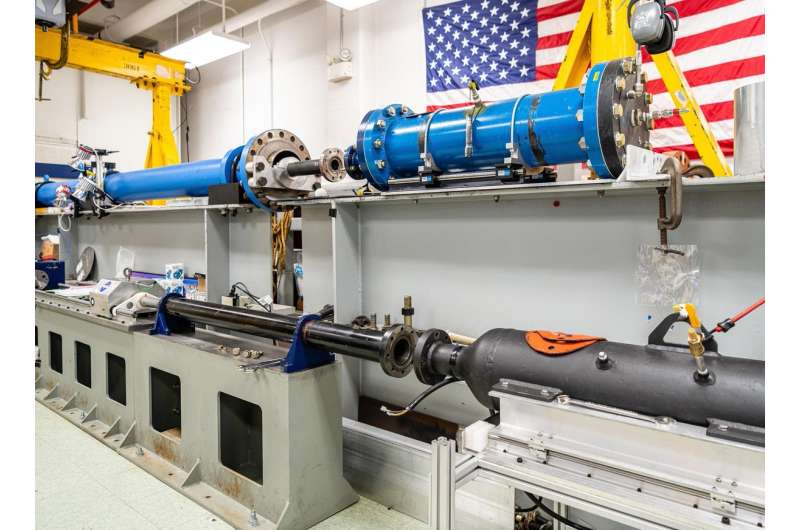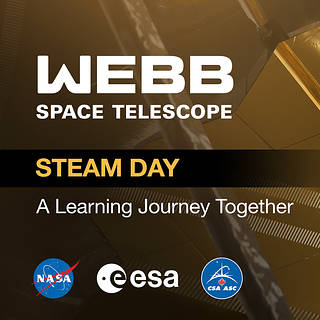
Copernical Team
Carbon dioxide reactor makes Martian fuel
 Engineers at the University of Cincinnati are developing new ways to convert greenhouse gases to fuel to address climate change and get astronauts home from Mars.
UC College of Engineering and Applied Science assistant professor Jingjie Wu and his students used a carbon catalyst in a reactor to convert carbon dioxide into methane. Known as the "Sabatier reaction" from the late French chemi
Engineers at the University of Cincinnati are developing new ways to convert greenhouse gases to fuel to address climate change and get astronauts home from Mars.
UC College of Engineering and Applied Science assistant professor Jingjie Wu and his students used a carbon catalyst in a reactor to convert carbon dioxide into methane. Known as the "Sabatier reaction" from the late French chemi Peering into the Moon's shadows with AI
 The Moon is a cold, dry desert. Unlike the Earth, it is not surrounded by a protective atmosphere and water which existed during the Moon's formation has long since evaporated under the influence of solar radiation and escaped into space. Nevertheless, craters and depressions in the polar regions give some reason to hope for limited water resources. Scientists from MPS, the University of Oxford
The Moon is a cold, dry desert. Unlike the Earth, it is not surrounded by a protective atmosphere and water which existed during the Moon's formation has long since evaporated under the influence of solar radiation and escaped into space. Nevertheless, craters and depressions in the polar regions give some reason to hope for limited water resources. Scientists from MPS, the University of Oxford NASA's InSight finds three big marsquakes, thanks to solar-panel dusting
 The lander cleared enough dust from one solar panel to keep its seismometer on through the summer, allowing scientists to study the three biggest quakes they've seen on Mars.
On Sept. 18, NASA's InSight lander celebrated its 1,000th Martian day, or sol, by measuring one of the biggest, longest-lasting marsquakes the mission has ever detected. The temblor is estimated to be about a magnitud
The lander cleared enough dust from one solar panel to keep its seismometer on through the summer, allowing scientists to study the three biggest quakes they've seen on Mars.
On Sept. 18, NASA's InSight lander celebrated its 1,000th Martian day, or sol, by measuring one of the biggest, longest-lasting marsquakes the mission has ever detected. The temblor is estimated to be about a magnitud NASA's Perseverance rover cameras capture Mars like never before
 Scientists tap into an array of imagers aboard the six-wheeled explorer to get a big picture of the Red Planet.
NASA's Perseverance rover has been exploring Jezero Crater for more than 217 Earth days (211 Martian days, or sols), and the dusty rocks there are beginning to tell their story - about a volatile young Mars flowing with lava and water.
That story, stretching billions of yea
Scientists tap into an array of imagers aboard the six-wheeled explorer to get a big picture of the Red Planet.
NASA's Perseverance rover has been exploring Jezero Crater for more than 217 Earth days (211 Martian days, or sols), and the dusty rocks there are beginning to tell their story - about a volatile young Mars flowing with lava and water.
That story, stretching billions of yea DLR is developing a Launch Coordination Center
 The increasing commercialisation of space travel - often referred to as 'New Space' - will lead to significantly more spacecraft launches. More than 15,000 new satellites are expected to be launched in the current decade. Many of these satellites will be used for communications, navigation or Earth observation. To ensure continuity of operations, regular replacement of some of these satellites w
The increasing commercialisation of space travel - often referred to as 'New Space' - will lead to significantly more spacecraft launches. More than 15,000 new satellites are expected to be launched in the current decade. Many of these satellites will be used for communications, navigation or Earth observation. To ensure continuity of operations, regular replacement of some of these satellites w Elon Musk says Inspiration4 crew had 'challenges' with toilet, vows for bathroom upgrades

The private space flight, SpaceX, completed a historic mission with the first all-civilian flight crew last weekend. The four members of the Inspiration4 crew raised $200 million for St. Jude Children's Research Hospital, and helped prove SpaceX founder Elon Musk's belief that non-professional astronauts can venture into space in regularity.
Every successful mission has its learning moments, however. One key takeaway from a three-day trip in space: Spacecraft bathrooms aren't ideal whatsoever.
In responding to followers asking about the mission, Musk tweeted Monday night that the Inspiration4 crew had some difficulties with the bathroom and promised upgrades for future missions.
"Definitely upgraded toilets :) We had some challenges with it this flight," Musk tweeted. The billionaire also promised better WiFi and oven.
While Musk didn't elaborate (for which we'll thank him), Inspiration4 member Jared Isaacman told Insider in July the facilities were located near the spacecraft's large cupola window.
"It's not a ton of privacy," he said. "But you do have this kind of privacy curtain that cuts across the top of the spacecraft, so you can kind of separate yourself from everyone else.
NASA ballistic air gun hurls rocks at space suits to test their micrometeorite protection

Shock testing is commonly used throughout engineering to determine how a product will do when impacted by something. That something could be anything from the ground to a cruise missile. Like so much else in space exploration, engineers at NASA are performing the same type of test, just scaled up. Instead of simply dropping the object under test, as is common in most settings, they shoot it with a steel ball going 3000 ft/second.
Researchers at the Ballistics Impact Lab use a 40-foot-long gun to simulate what it would be like to be hit by a micrometeorite in space. Recently, the team has focused on testing different types of fabric for use in space suits. A rapid decompression from a micrometeorite strike anywhere on a suit would be fatal to any astronaut unlucky enough to suffer one.
Understanding how a piece of fabric would fail in such a situation is critical to improving its design. Some forms of failure are worse than others. The lab has a series of high-speed cameras and sensors surrounding the material under test to ensure it can capture as much data about those failure modes as possible.
Space station crew to relocate Soyuz, make room for new crewmates

Three residents of the International Space Station will take a short ride aboard a Soyuz MS-18 spacecraft Tuesday, Sept. 28, relocating the spacecraft to prepare for the arrival of the next set of station crew members.
Expedition 65 flight engineers Mark Vande Hei of NASA and Oleg Novitskiy and Pyotr Dubrov of the Russian Space Agency Roscosmos will undock from the station's Earth-facing Rassvet module at 8:21 a.m. EDT. They will dock again at the Nauka Multipurpose Laboratory Module at 9 a.m. This will be the first time a spacecraft has attached to the new Nauka module, which arrived at the station in July.
Live coverage of the maneuver will begin at 8 a.m. on NASA Television, the NASA app, and the agency's website.
Life support cooked up from lunar rocks

Engineers have successfully shown how water and oxygen can be extracted by cooking up lunar soil, in order to support future Moon bases. A laboratory demonstrator, developed by a consortium of the Politecnico Milano, the European Space Agency, the Italian Space Agency and the OHB Group, is presented this week at the Europlanet Science Congress (EPSC) 2021.
The set-up uses a two-step process, well known in industrial chemistry for terrestrial applications, that has been customized to work with a mineral mixture that mimics the lunar soil. Around 50% of lunar soil in all regions of the Moon is made up of silicon- or iron-oxides, and these in turn are around 26% oxygen. This means that a system that efficiently extracts oxygen from the soil could operate at any landing site or installation on the Moon.
In the experimental set-up, the soil simulant is vaporized in the presence of hydrogen and methane, then "washed" with hydrogen gas.
NASA Announces Virtual Webb STEAM Day Event for Students, Educators
 NASA invites learners of all ages, including students and teachers who recently returned to the classroom environment, to register for a special event ahead of the upcoming launch of the James Webb Space Telescope.
NASA invites learners of all ages, including students and teachers who recently returned to the classroom environment, to register for a special event ahead of the upcoming launch of the James Webb Space Telescope. 
